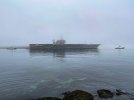Make sure you visit the Cassin Young in Boston before you build!The Museum at the Navy Yard in DC has a really neat cut away model of a Fletcher class. Beautiful lines. Have a model of one waiting to be built.
-
Please take a moment and update your account profile. If you have an updated account profile with basic information on why you are on Air Warriors it will help other people respond to your posts. How do you update your profile you ask?
Go here:
Edit Account Details and Profile
You are using an out of date browser. It may not display this or other websites correctly.
You should upgrade or use an alternative browser.
You should upgrade or use an alternative browser.
Ship Photo of the Day
- Thread starter Randy Daytona
- Start date
Some very positive news out of the state of Texas: the project to save and restore USS Texas (BB-35) - the last remaining WW1 super-dreadnought battleship in the world - is moving forward.
 battleshiptexas.org
battleshiptexas.org
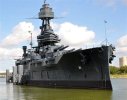
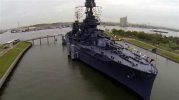
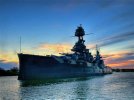
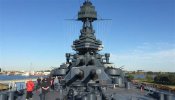
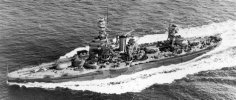
News | Battleship Texas Foundation
View the latest news and updates from the Battleship Texas Foundation. Contact us with any questions!
10/27/21 – GULF COPPER SHIPYARD IN GALVESTON SELECTED FOR REPAIR OF BATTLESHIP TEXAS





Some very positive news out of the state of Texas: the project to save and restore USS Texas (BB-35) - the last remaining WW1 super-dreadnought battleship in the world - is moving forward.
News | Battleship Texas Foundation
View the latest news and updates from the Battleship Texas Foundation. Contact us with any questions!battleshiptexas.org
10/27/21 – GULF COPPER SHIPYARD IN GALVESTON SELECTED FOR REPAIR OF BATTLESHIP TEXAS
View attachment 34303
I don't know why they don't just permanently drydock her, like the HMS Victory, or put her in cement, like the Mikasa. Same with the USS Olympia. I guess the upfront costs and the size would be the biggest deterrents?
I don't know why they don't just permanently drydock her, like the HMS Victory, or put her in cement, like the Mikasa. Same with the USS Olympia. I guess the upfront costs and the size would be the biggest deterrents?
Good question- but I hope they find a way to fully preserve the ship. One of my bucket list items is to tour every battleship and especially with the Texas being a WW1 dreadnought, I would certainly like to see it.
Not sure if this is a better way to allow for proactive maintenance and repair, or was simply a design to accommodate river levels, but the USS Kidd in Baton Rouge (most recently used to film bunch of Greyhound) has sort of a cradle that allows it to float for six months a year (in freshwater, if thats helpful and if that’s indeed what we’re calling the Mississippi River) and effectively be dry docked for the other six. Always kinda odd to cross the river and looking at her floating over the river when it’s low.I don't know why they don't just permanently drydock her, like the HMS Victory, or put her in cement, like the Mikasa. Same with the USS Olympia. I guess the upfront costs and the size would be the biggest deterrents?
Max the Mad Russian
Hands off Ukraine! Feet too
When I've askesd the same question about cruiser Aurora and nuclear icebreaker Lenin, permanently moored at St.Petersberg and Murmansk respectively, I've been told this is a matter of money - no ship is intended to exist for good, and even extended lifespan as a monument afloat with all possible restore spendings is in sum cheaper than funeral of the ship ashore in the cement or drydock since both ways take amount of land square which otherwise could be used with more profit. It is far from being evident but big city management is generally hostile to such a permanent installations.I don't know why they don't just permanently drydock her, like the HMS Victory, or put her in cement, like the Mikasa.
The VB-10,000 is a heavy lift catamaran barge used primarily for oil platforms. It is capable of lifting 6,800 tons.
Length: 277 ft, Beam: 314 ft
8x1000HP thrusters

 en.m.wikipedia.org
en.m.wikipedia.org
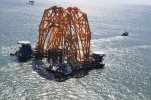
VB-10,000 prepares to place a decommissioned jacket as an artificial reef off the coast of Louisiana
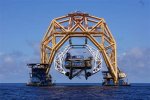
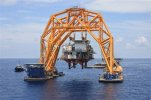
Length: 277 ft, Beam: 314 ft
8x1000HP thrusters

VB-10,000 (ship) - Wikipedia

VB-10,000 prepares to place a decommissioned jacket as an artificial reef off the coast of Louisiana


The VB-10000 looks like it should combine with four other, similar machines, each one run by an individual with varying and endearing traits (age, gender, body type, personalities), each one a bright but different color that may or may not ascribe to their personality quirks, and together they form a futuristic crime-fighting super robot that takes on super villain super robots in one-on-one combat.
Made me think of Project Azorian and the Glomar Explorer. The documentary on Amazon Prime is very good. The engineering challenges and accomplishments were far more significant than I thought. Not just a cold war spy story.The VB-10,000 is a heavy lift catamaran barge used primarily for oil platforms. It is capable of lifting 6,800 tons.
Length: 277 ft, Beam: 314 ft
8x1000HP thrusters

VB-10,000 (ship) - Wikipedia
en.m.wikipedia.org
View attachment 34315
VB-10,000 prepares to place a decommissioned jacket as an artificial reef off the coast of Louisiana
View attachment 34316
View attachment 34317
I have been to nearly preserved naval vessel in the US (including the Texas). I still find LST 393 and the SS Lane Victory among the nest because they can still move under their own power. Every submarine I have been in seems exactly like the others…including the German and Soviet models. Maybe I lack imagination?Good question- but I hope they find a way to fully preserve the ship. One of my bucket list items is to tour every battleship and especially with the Texas being a WW1 dreadnought, I would certainly like to see it.
IJA Akitsu Maru was either an escort carrier - or amphibious landing ship - of the Imperial Japanese ARMY. Originally designed as a passenger liner, she ended up with a straight deck but no hangar. In addition to its aircraft, it carried 27 landing craft while also having a well deck that could be flooded. Speaking of aircraft, in addition to airplanes, the Akitsu Maru was one of the first ships to operate rotorcraft, in this case the Kayaba KA-1 autogyro which carried a couple of depth charges to attack submarines.
The Akitsu Maru was sunk by the submarine USS Queenfish on 15 November 1944.
Length: 471 ft, Beam: 64 ft, Displacement: 11,800 tons
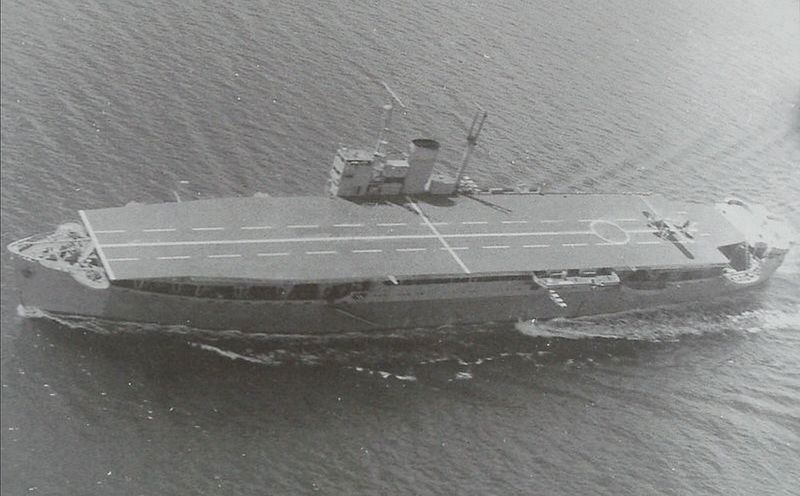
 en.wikipedia.org
en.wikipedia.org
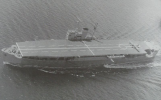
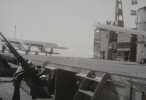
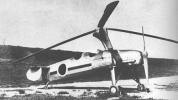
The Akitsu Maru was sunk by the submarine USS Queenfish on 15 November 1944.
Length: 471 ft, Beam: 64 ft, Displacement: 11,800 tons

Japanese landing craft carrier Akitsu Maru - Wikipedia



Last edited:
The German Auxiliary cruiser Atlantis (HSK-2) was one of the most successful commerce raiders of WW2. She covered over 100,000 miles in less than 2 years, capturing or sinking 22 ships with a combined tonnage of over 144,000 tons, eventually being sunk by the heavy cruiser HMS Devonshire on 22 Nov 1941 after an intercepted Enigma communication.
Of extreme importance was the capture of SS Automedon by Atlantis on 11 Nov 1940.
The Germans boarded the stricken ship and broke into the strong room, where they found fifteen bags of Top Secret mail for the British Far East Command, including a large quantity of decoding tables, fleet orders, gunnery instructions, and naval intelligence reports. After wasting an hour breaking open the ship's safe only to discover "a few shillings in cash", a search of the Automedon's chart room found a small weighted green bag marked "Highly Confidential" containing the Chief of Staff's report to the Commander in Chief Far East, Robert Brooke Popham. The bag was supposed to be thrown overboard if there was risk of loss, but the personnel responsible for this had been killed or incapacitated. The report contained the latest assessment of the Japanese Empire's military strength in the Far East, along with details of Royal Air Force units, naval strength, and notes on Singapore's defences. It painted a gloomy picture of British land and naval capabilities in the Far East, and declared that Britain was too weak to risk war with Japan.
After reading the captured Chief of Staff report, on 7 January 1941 Japanese Admiral Yamamoto wrote to the Naval Minister asking whether, if Japan knocked out America, the remaining British and Dutch forces would be suitably weakened for the Japanese to deliver a death blow; the Automedon intelligence on the weakness of the British Empire is thus credibly linked with the Japanese attack on Pearl Harbor and the attack leading to the fall of Singapore.
The Atlantis was armed with 6 single 150 mm (5.9") cannons, torpedo tubes, mines and 2 seaplanes. With diesel power, the 501 ft, 17,000 ton cargo ship had a top speed of 17 knots and a phenomenal range of 60,000 miles at 10 knots.
https://warfarehistorynetwork.com/2016/11/08/the-atlantis-the-kriegsmarines-last-corsair/
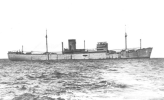
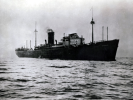
Atlantis disguised as Tamesis, 1940.
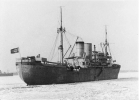
Of extreme importance was the capture of SS Automedon by Atlantis on 11 Nov 1940.
The Germans boarded the stricken ship and broke into the strong room, where they found fifteen bags of Top Secret mail for the British Far East Command, including a large quantity of decoding tables, fleet orders, gunnery instructions, and naval intelligence reports. After wasting an hour breaking open the ship's safe only to discover "a few shillings in cash", a search of the Automedon's chart room found a small weighted green bag marked "Highly Confidential" containing the Chief of Staff's report to the Commander in Chief Far East, Robert Brooke Popham. The bag was supposed to be thrown overboard if there was risk of loss, but the personnel responsible for this had been killed or incapacitated. The report contained the latest assessment of the Japanese Empire's military strength in the Far East, along with details of Royal Air Force units, naval strength, and notes on Singapore's defences. It painted a gloomy picture of British land and naval capabilities in the Far East, and declared that Britain was too weak to risk war with Japan.
After reading the captured Chief of Staff report, on 7 January 1941 Japanese Admiral Yamamoto wrote to the Naval Minister asking whether, if Japan knocked out America, the remaining British and Dutch forces would be suitably weakened for the Japanese to deliver a death blow; the Automedon intelligence on the weakness of the British Empire is thus credibly linked with the Japanese attack on Pearl Harbor and the attack leading to the fall of Singapore.
The Atlantis was armed with 6 single 150 mm (5.9") cannons, torpedo tubes, mines and 2 seaplanes. With diesel power, the 501 ft, 17,000 ton cargo ship had a top speed of 17 knots and a phenomenal range of 60,000 miles at 10 knots.
https://warfarehistorynetwork.com/2016/11/08/the-atlantis-the-kriegsmarines-last-corsair/


Atlantis disguised as Tamesis, 1940.


